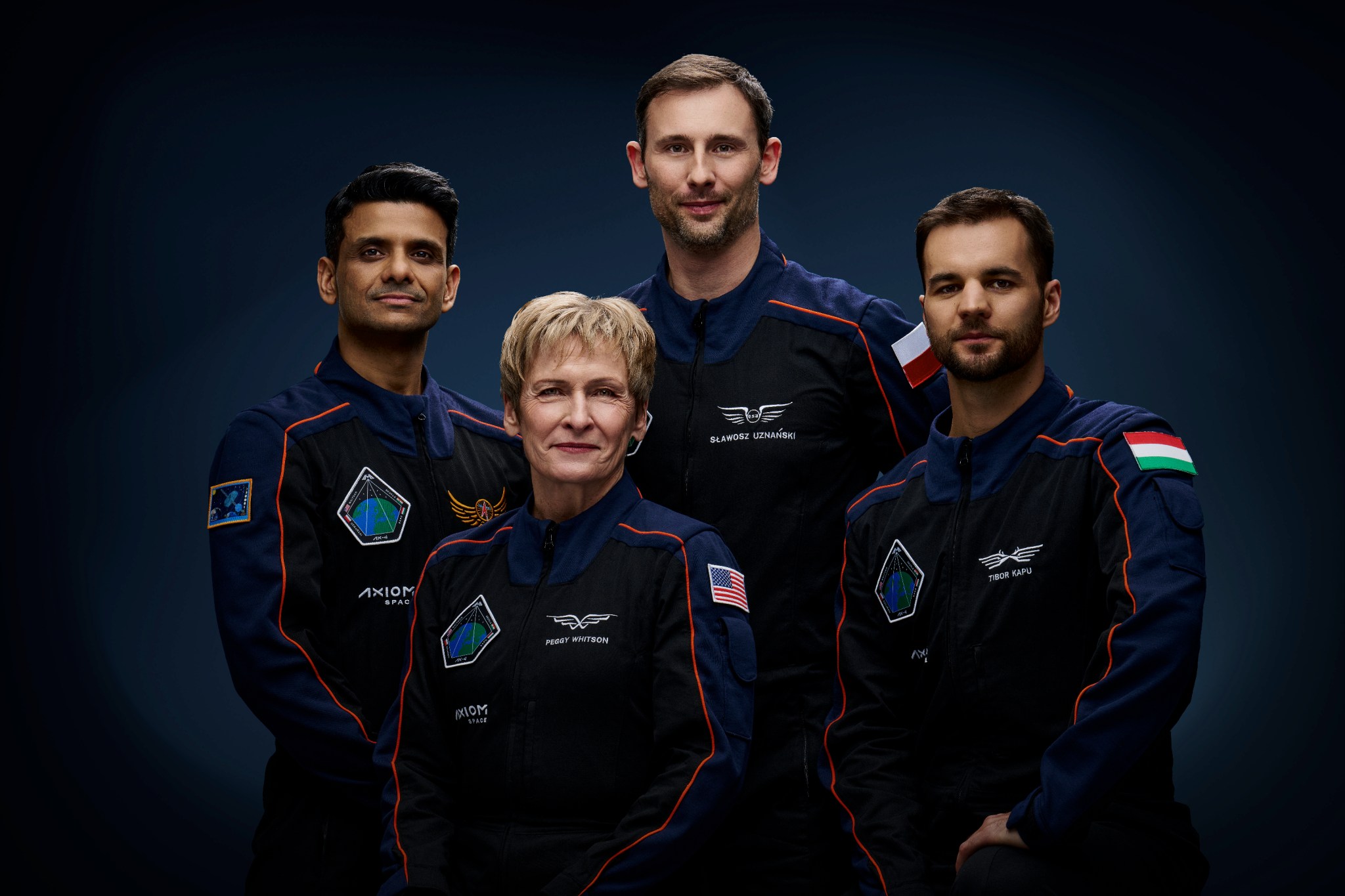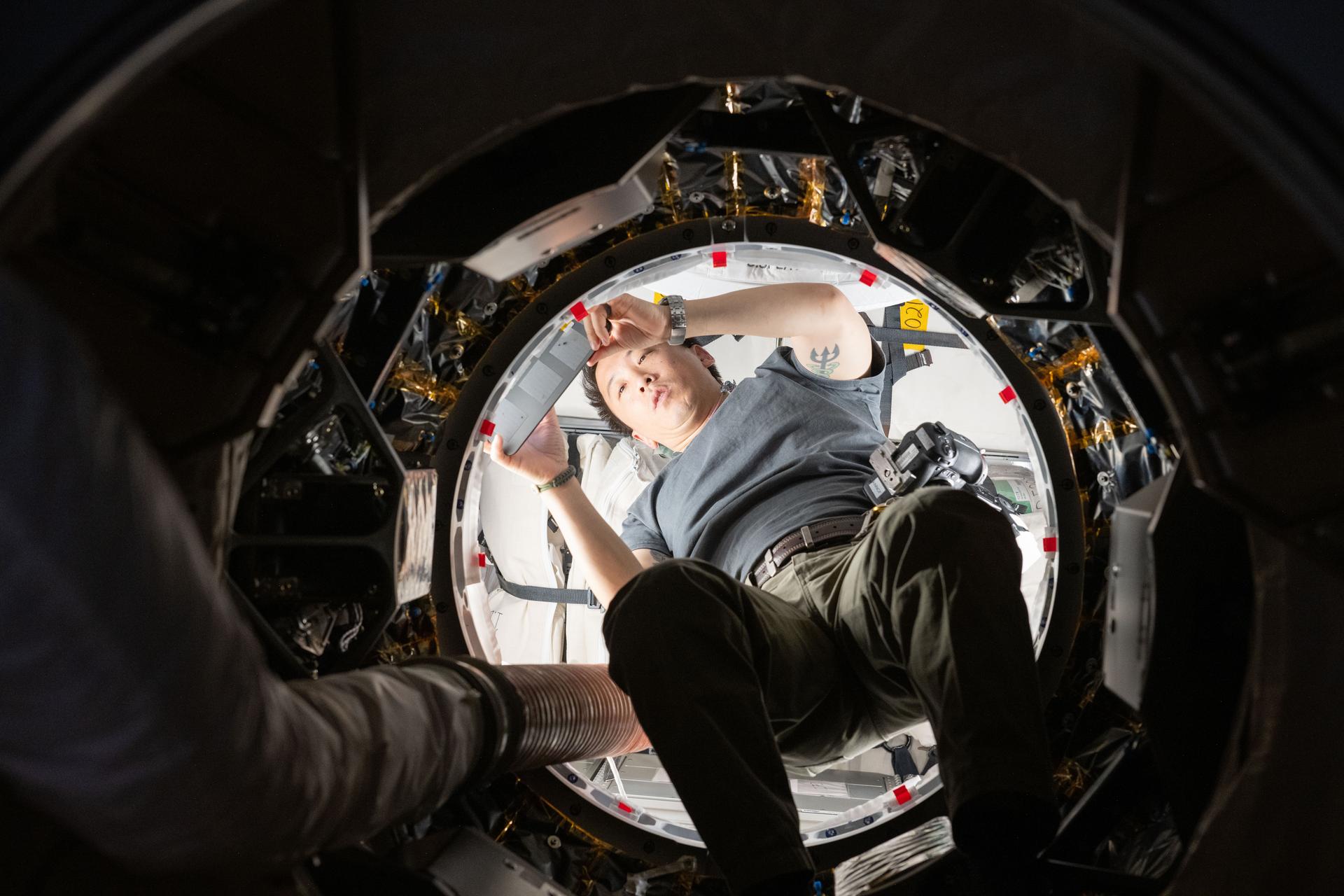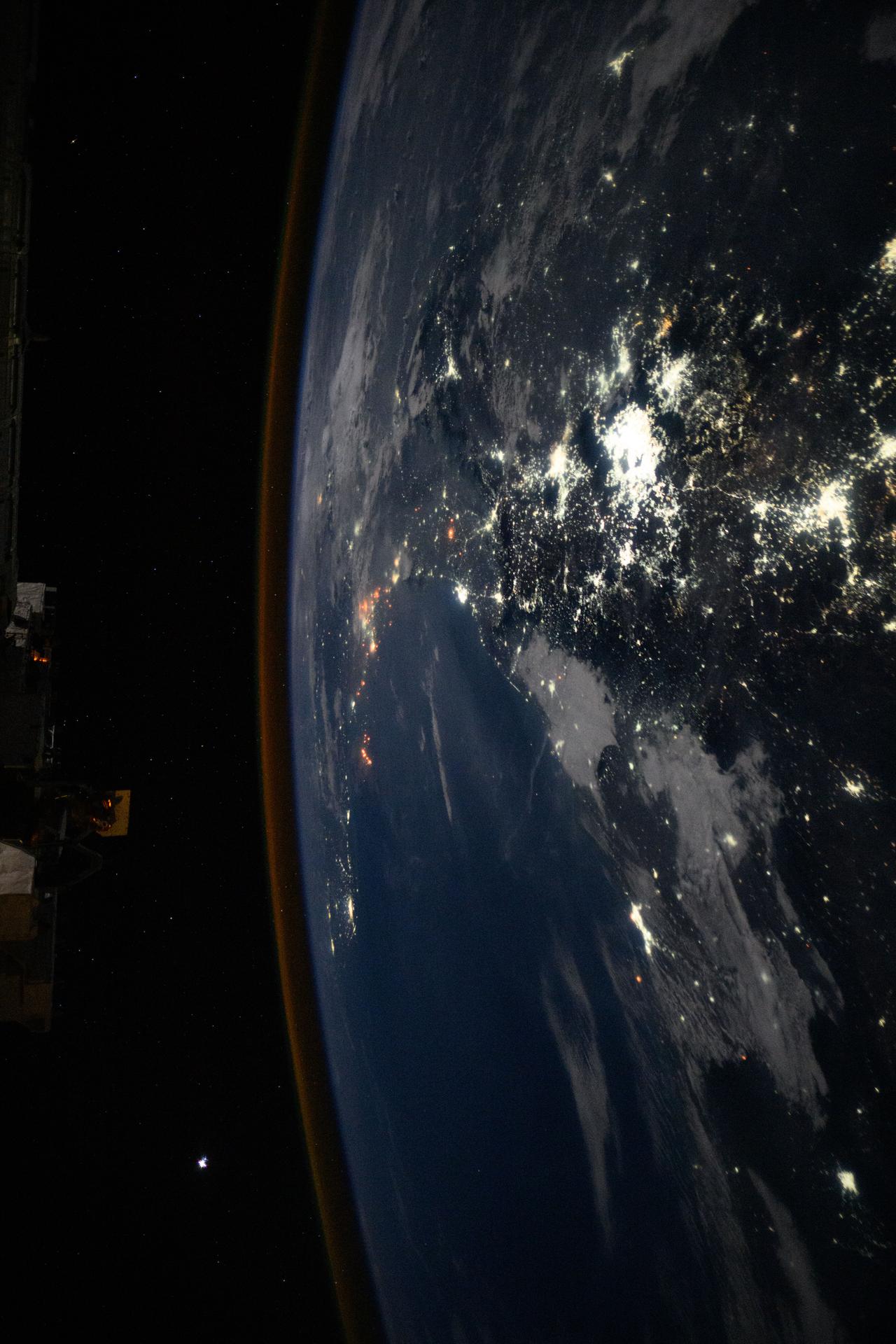Station Prepares for Axiom Mission 4, Studies How Body Adapts to Space

The Expedition 73 crew is preparing to welcome the arrival of Axiom Mission 4 (Ax-4) and its four astronauts to the International Space Station next week. Station Commander Takuya Onishi of JAXA (Japan Aerospace Exploration Agency) and NASA Flight Engineers Jonny Kim, Anne McClain, and Nichole Ayers joined each other on Tuesday and reviewed the upcoming private astronaut mission. The station quartet called down to mission managers and discussed Ax-4 operations and station readiness.
Ax-4 is targeted to launch from NASA’s Kennedy Space Center at 8:22 a.m. EDT on June 10 aboard a SpaceX Dragon spacecraft. Veteran astronaut Peggy Whitson will command Ax-4 and lead Indian Pilot Shubhanshu Shukla and Mission Specialists Sławosz Uzanański-Wiśniewksi from Poland and Tibor Kapu from Hungary to the orbital outpost. The Ax-4 astronauts will ride inside Dragon for an autonomous docking to the station’s space-facing port on the Harmony module at 12:30 p.m. on June 11.
Earlier on Tuesday, Onishi once again collected his blood, saliva, and urine samples for processing and cold stowage to analyze the specimens for space-caused molecular, metabolic, and microbial changes in crew members. Next, he inspected multi-layer insulation and joints on the Japanese robotic arm’s Small Fine Arm for potential repairs.
Onishi also participated in an exercise study with McClain with the pair taking turns pedaling on the Destiny laboratory module’s exercise cycle. They each wore chest electrodes and breathing gear to measure their aerobic capacity, or the maximum amount of oxygen the body uses during exercise, in microgravity.
McClain later partnered with Ayers and stowed hardware inside the Bigelow Expandable Activity Module, or BEAM. Ayers also assisted Onishi with the robotics inspection work inside the Kibo laboratory module before reconfiguring electronics and networking gear inside Harmony.
NASA Flight Engineer Jonny Kim continued his 48-hour health monitoring session changing out a sensor-packed headband and vest after working out on the advanced resistive exercise device and jogging on the COLBERT treadmill. He took off the first set of biomedical devices so they could hang out to dry then put on the second set of health monitoring garments and performed breathing calibrations and applied Ultrasound Echo gel on the electrodes.
Veteran Roscosmos cosmonaut Sergey Ryzhikov joined Flight Engineer Alexey Zubritskiy and serviced a neutron radiation detector before inspection duties inside the Zvezda service module. Zubritskiy also set up Earth observation hardware photographing ocean and sea-based landmarks across North America and Europe. Flight Engineer Kirill Peskov also pointed a camera outside a space station window and photographed European rivers and glaciers.
Learn more about station activities by following the space station blog, @space_station and @ISS_Research on X, as well as the ISS Facebook and ISS Instagram accounts.
Get the latest from NASA delivered every week. Subscribe here.
Powered by WPeMatico
Mark A. Garcia







